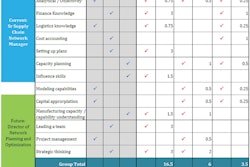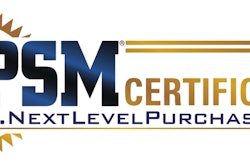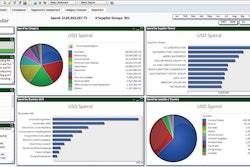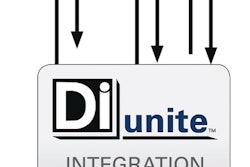
Volcanoes, tsunamis, earthquakes, landslides—the last 10 years are a rude reminder that one or more of these natural disasters will dramatically impact our current modes of living and doing business. And while such larger fatality events are less frequent than climatic conditions such as floods, heat waves and blizzards, according to the U.S. Geological Survey (USGS), each of these incidents reinforces the need for a deeper understanding and focus on catastrophic event preparedness. And at the national security level, having a methodology that proactively prepares for such supply chain risk hazards is mandatory.
Cue from the White House
In order to best understand these vulnerabilities and create a transparent collaborative framework, both private sector and public sector organizations came together in the mid-Atlantic region under an initiative sponsored by the White House to creating a framework that clearly defines their roles, responsibilities and accountabilities; devise a robust plan that could easily adapt to varying degrees of vulnerabilities; and implement a platform that is standardized both internally and externally across the ecosystem.
Working through the Regional Catastrophic Preparedness Grant Program (RCPGP) Mid-Atlantic Supply Chain Resilience Project, the Shared Intellectual, Inventory, Infrastructure, Information and Integrated Ecosystem Systems (SI5ES) was adopted for exploration.
SI5ES facilitates communication, collaboration and exercises among key partners and with the public sector. Its methodology frames supply chain risk problems and is especially suited for an unknown context, such as an emerging market or a catastrophic event. A principal benefit of the SI5ES is to provide a significant mix of distinctive partners such as private and public entities; critical infrastructure; process; and people aspect of several different supply chains. This creates a shared platform for understanding and mitigating risk and anticipating response/recovery actions.
Phase implementation
In order to understand the effectiveness of the SI5ES, it is vital to look at each of its six phases of intitation.
Phase 0: Define the strategies—The purpose of this phase is to understand the relationship of catastrophe preparedness to corporate strategy, business planning, competing priorities, pricing and other core initiatives.
PHASE 1: Understand the big picture—Supply chain zones are typically characterized by a coherent set of operating assumptions regarding the availability and flow of product and services. Additionally, they are often organized to minimize reliance on other zones. Relationships within a zone are functionally and contractually organized around these assumptions and their expected persistence. In the geographic region impacted by the potentially catastrophic event, it is important to understand:
‘How have the pre-event assumptions changed by the potentially catastrophic event? Do the zones involved have sufficient strategic capacity to recover and potentially redirect local capabilities?’
PHASE 2: Analyze supply chain zone, hubs and sites—The core of every zone consists of hubs, which equate to the principal nodes of the supply chain network. Determining the strategic capacity of each individual hub involves understanding what processes are accomplished; what capabilities exist; what interdependencies facilitate the processes and capabilities; as well as time sequences and sensitivities related to processes, capabilities and interdependencies for each hub.
This supply chain preparedness methodology differs from others in that 1) it focuses on the fundamentals and 2) the role of the lead component. Traditional problem solving steps include gathering, analyzing and synthesizing. Engaging these fundamentals by subject area—such as infrastructure, process and people—establishes an overall preparedness framework by zone. Secondly, a supply chain preparedness framework is generated by fixing a lead component, something that needs to be considered as a given or a constraint. Analyses of each subject area are then integrated to develop an overall hub picture.
The methodology ties all subject areas and their concepts together. Infrastructure is the hardest and most tangible subject and pivotal analysis is performed around it while people and process are tied in. Ignoring one or all aspects is a common mistake and results in less than optimal preparedness.
In case of a potential catastrophe, it is important to identify: ‘which supply chain characteristic is most likely to present the greatest constraint: infrastructure, processes or people?
While developing the analysis for a network hub, it is critical to identify how sites mature with time. While the traditional role of the sites is to provide value-added activities—such as late-stage order fulfillment with improved demand data—they can also be a buffer against uncertainty in supply performance; demand volatility while providing effective respond/recover strategy; as well as redundancy/resiliency in your supply chain. Such redundancy is a critical consideration especially during start-up stages and for longer-term resilience.
PHASE 3: Identify supply chain resilience priorities for zones, hubs and sites—Based on the emerged understanding from the prior phases, how can one describe the strategic reality of the zones and hubs? The key is to apply the strategic frameworks developed as a part of phase II and add more detail. At this phase, this translates into the slotting plan for the picking area. What does this process expose in terms of assumptions, expectations and mitigation opportunities?
During Phase three, it is imperative to define the requirements which will achieve your end-state goals. This is followed by a careful exercise to pare down requirements resulting in a simple working model, while concurrently enabling significant resilience without sacrificing cost and service. Engineers or supply chain practitioners can easily overload features, functions and details that add complexity. Beware of the temptation to over-complicate details as it could potentially increase the likelihood of cascading failure in case of potential catastrophe.
PHASE 4: Develop supply chain mitigation and a preparedness framework—This phase specifies the requirements and results in a master supply chain mitigation and preparedness framework with tasks, resources, times, sequence and interdependencies.
Reacting to a potentially catastrophic event requires a heavy presence of external support from contractors, subcontractors and government officials. To keep everyone on the same page is a critical management challenge—be it vertical, horizontal, across functions and beyond the company borders. A master framework is a key document for everyone to follow. This should include clearly defined tasks, accountabilities, expectations, timelines and interdependencies. A common glossary of terms, reporting at right levels, scorecards on the progress, obstacles in achieving the goals, conflict resolution, clearly defined escalations and priority management is critical to successful startup. Clearly defined communications, forums, participants have to be established well in advance to ensure that the right partners are involved at all steps. Tasks defined as a part of the master plan should be relevant, measurable, clearly defined hand-offs and output expectations. Each master framework should have multiple alternatives in place for unforeseen problems, as well as a process for identifying opportunities to break up interdependencies between tasks.
PHASE 5: Resiliency program execution—The final phase is coincidental with a potentially catastrophic event. The frameworks previously developed are implemented to restore or redirect supply chains and, if possible, recover supply chain strategic capacity and local capability. It is highly recommended to actively review and renew the prior phases of work. Process evaluation includes all processes, communications, personnel engagements, conflicts and scope management. It essentially asks: ‘If we had to do this all over again, what would we do differently? What should and shouldn’t we have done?’
Getting ready for a potential catastrophe includes putting together a systematic readiness checklist for infrastructure, process and people. It’s critical to check that of each of these components works in the exercise phase.
Lessons learned
It is vital to prepare for such potentially, catastrophic events that can change course at any moment. The ability to respond to with urgency, efficiency and clarity—as opposed to reacting out of panic or hysteria— is critical. Organizations that seriously engage in catastrophic event planning must recognize that the best infrastructure design and process planning and implementation are potentially money down the drain without people who understand and value their purpose in the crisis event. The “people” element must have 110 percent buy-in that includes a personal acknowledgment of the importance of their ability and responsibility. Having a valued role combined with the old—but effective—adage of “practice, practice, practice” until the second nature “remember then do” response is vital.












